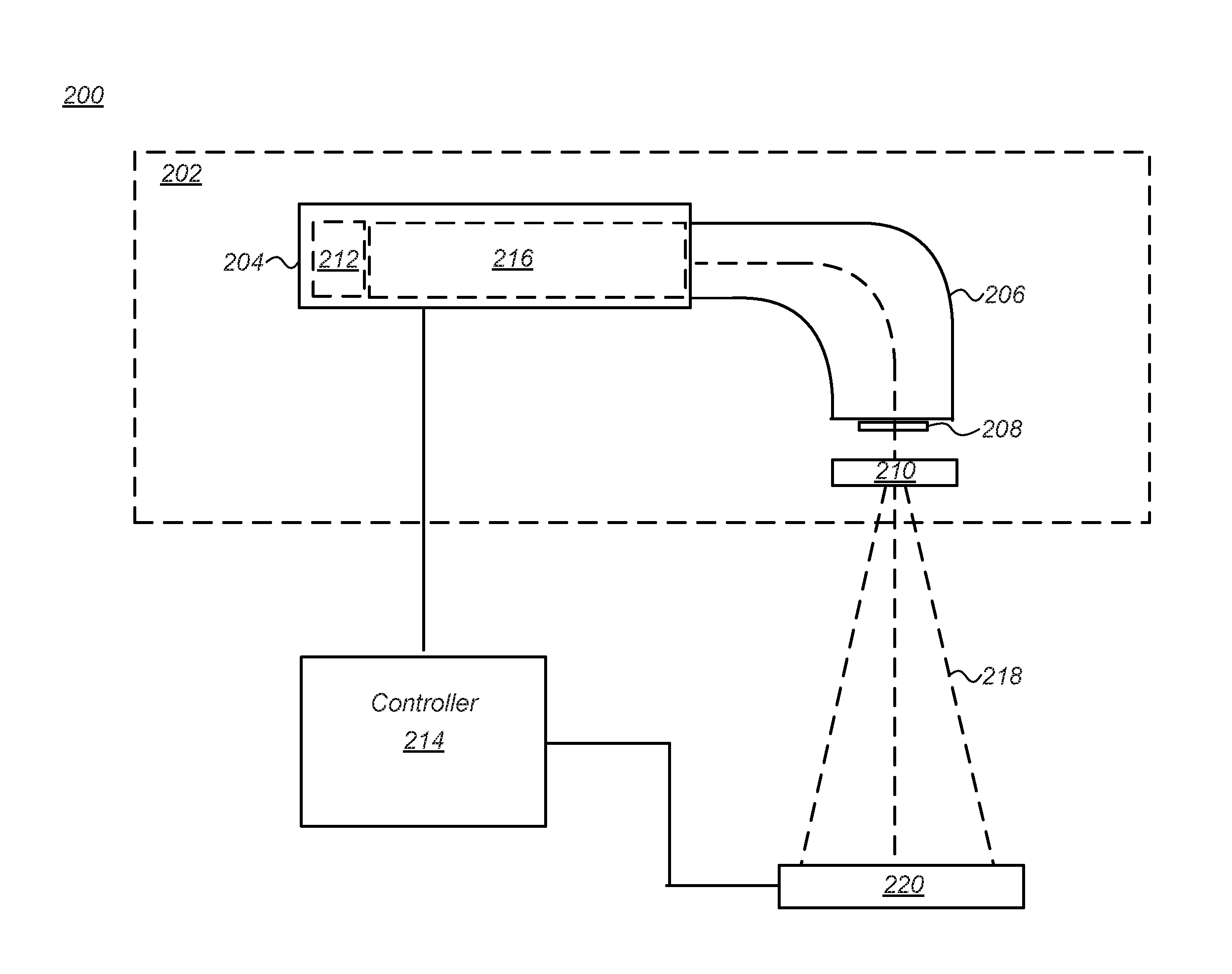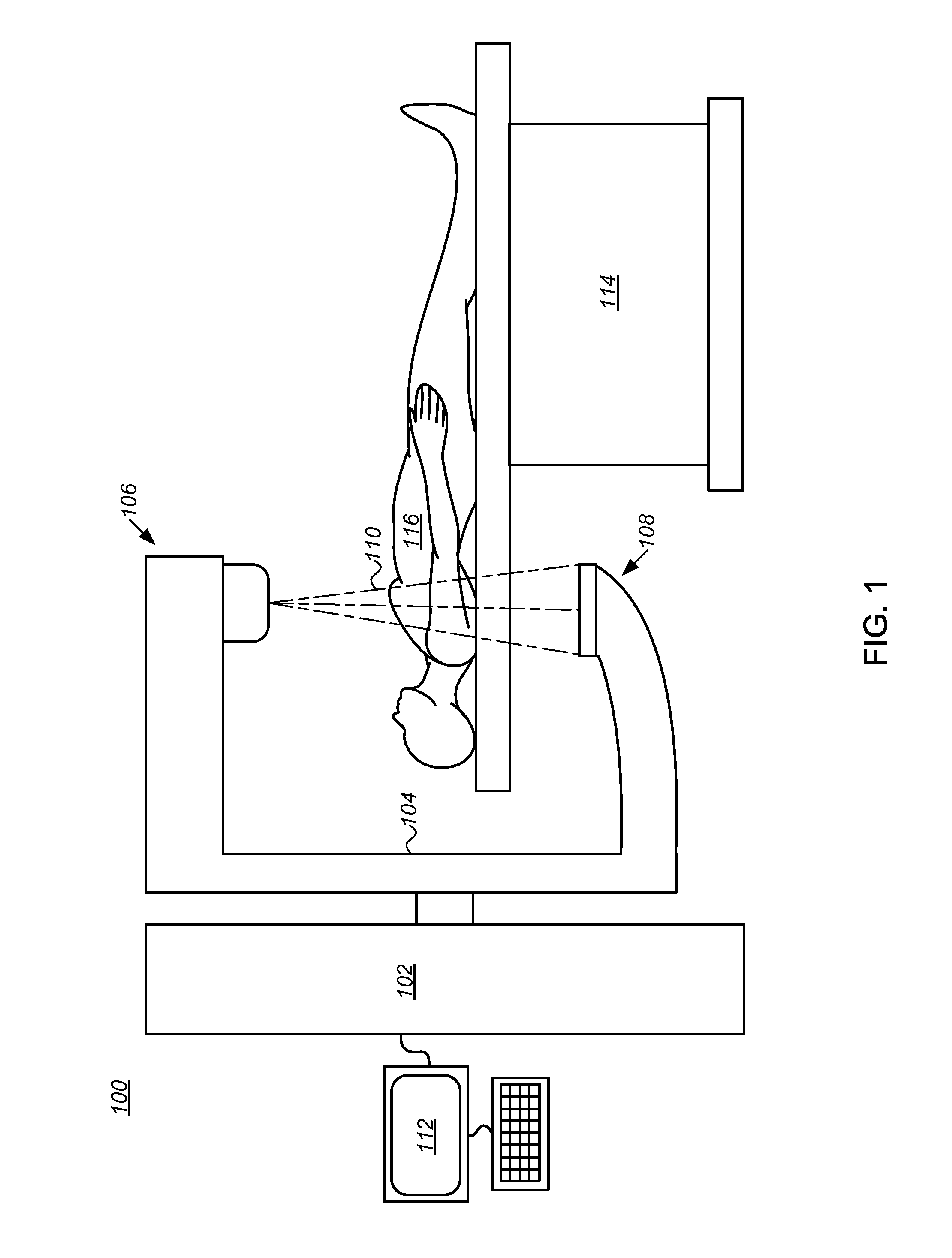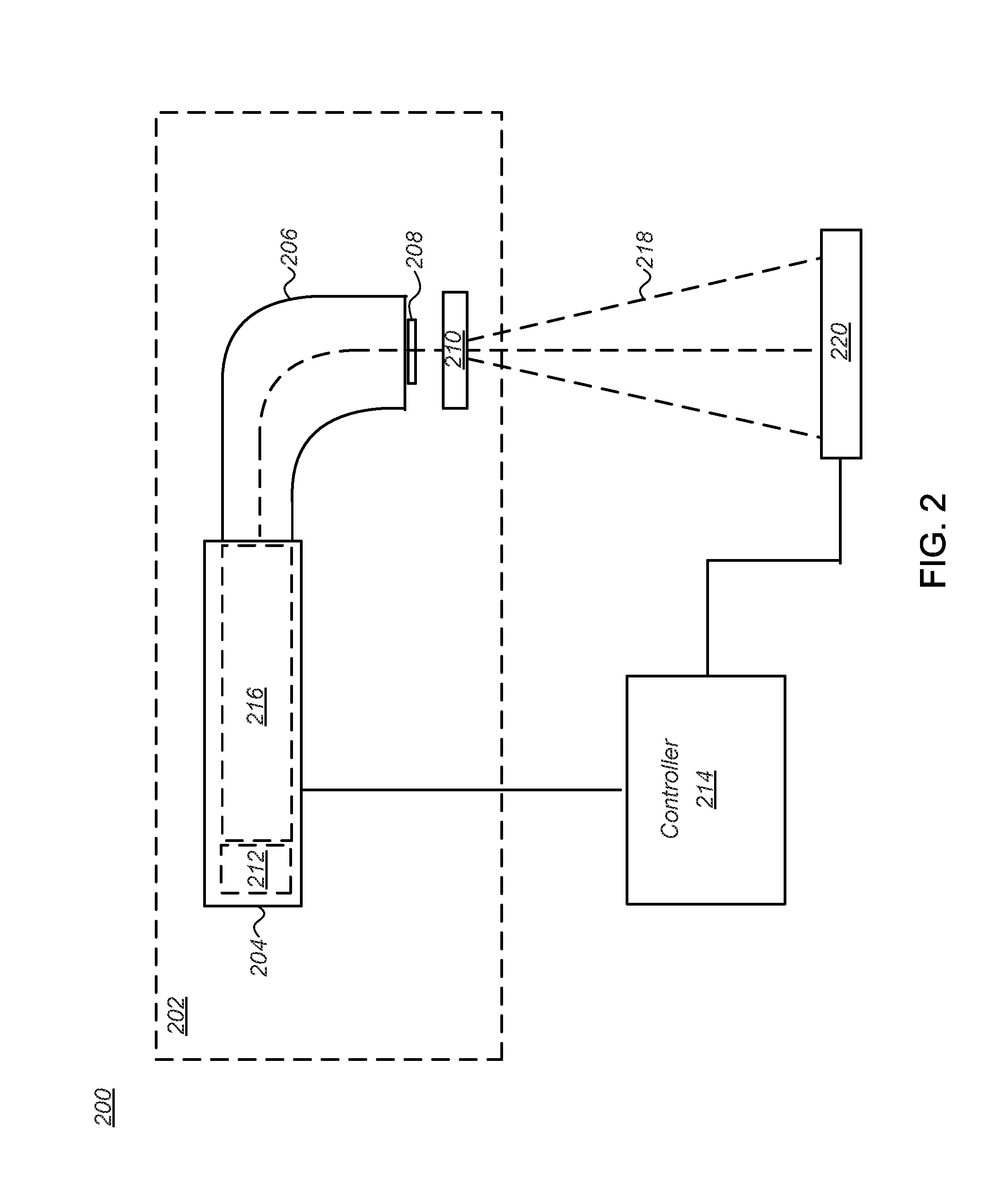System and method for projection image tracking of tumors during radiotherapy
a tumor and imaging system technology, applied in the field of system and method for projection image tracking of tumors during radiotherapy, can solve the problems of destroying tumors, and reducing the accuracy and effectiveness of radiotherapy treatment, so as to improve the efficiency of tumor treatment, reduce the distribution of photon energy, and high contrast imaging
- Summary
- Abstract
- Description
- Claims
- Application Information
AI Technical Summary
Benefits of technology
Problems solved by technology
Method used
Image
Examples
Embodiment Construction
[0018]The present disclosure is directed generally to projection image tracking of tumors during radiotherapy, and more particularly to a system and method for imaging and treatment of tumorous tissue in a patient.
[0019]The best cancer treatment delivery is obtained at MV (megavoltage) energies. It is possible to also image at MV energies and this can provide a tremendous targeting advantage because one can simultaneous see where the treatment dose is being delivered while the treatment process is in progress. The great advantage this gives is the opportunity to modulate in real time, the shape and dose distribution (across the shape) for maximum treatment dose delivery effectiveness to the cancer lesion while sparing surrounding healthy tissue from the strongly damaging effects of the radiation. This surrounding dose damage issue is a major and poorly solved problem currently in the field of radiation therapy.
[0020]Disclosed herein is a system and method that combines a reduction i...
PUM
 Login to View More
Login to View More Abstract
Description
Claims
Application Information
 Login to View More
Login to View More - R&D
- Intellectual Property
- Life Sciences
- Materials
- Tech Scout
- Unparalleled Data Quality
- Higher Quality Content
- 60% Fewer Hallucinations
Browse by: Latest US Patents, China's latest patents, Technical Efficacy Thesaurus, Application Domain, Technology Topic, Popular Technical Reports.
© 2025 PatSnap. All rights reserved.Legal|Privacy policy|Modern Slavery Act Transparency Statement|Sitemap|About US| Contact US: help@patsnap.com



